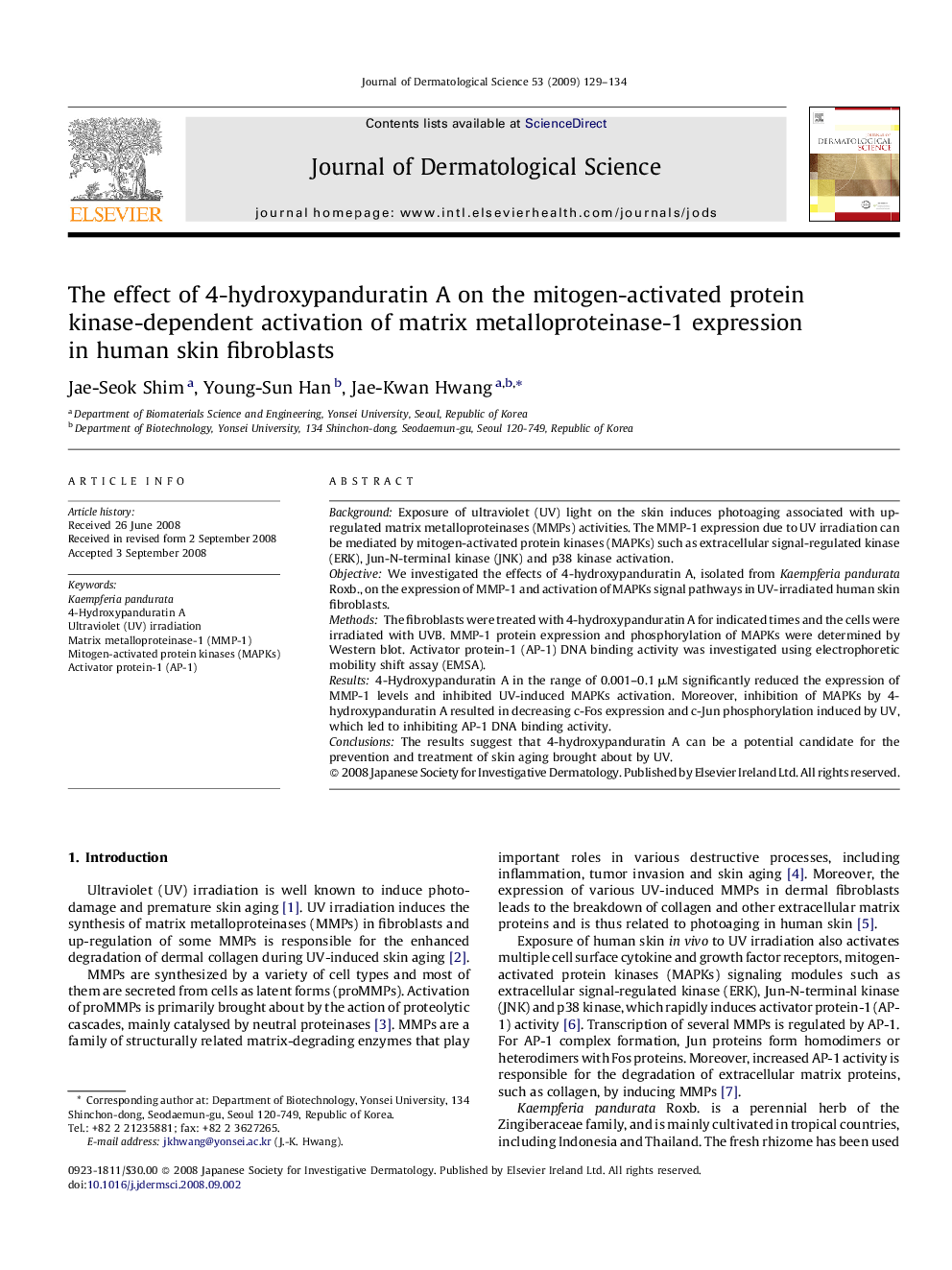| Article ID | Journal | Published Year | Pages | File Type |
|---|---|---|---|---|
| 3213822 | Journal of Dermatological Science | 2009 | 6 Pages |
BackgroundExposure of ultraviolet (UV) light on the skin induces photoaging associated with up-regulated matrix metalloproteinases (MMPs) activities. The MMP-1 expression due to UV irradiation can be mediated by mitogen-activated protein kinases (MAPKs) such as extracellular signal-regulated kinase (ERK), Jun-N-terminal kinase (JNK) and p38 kinase activation.ObjectiveWe investigated the effects of 4-hydroxypanduratin A, isolated from Kaempferia pandurata Roxb., on the expression of MMP-1 and activation of MAPKs signal pathways in UV-irradiated human skin fibroblasts.MethodsThe fibroblasts were treated with 4-hydroxypanduratin A for indicated times and the cells were irradiated with UVB. MMP-1 protein expression and phosphorylation of MAPKs were determined by Western blot. Activator protein-1 (AP-1) DNA binding activity was investigated using electrophoretic mobility shift assay (EMSA).Results4-Hydroxypanduratin A in the range of 0.001–0.1 μM significantly reduced the expression of MMP-1 levels and inhibited UV-induced MAPKs activation. Moreover, inhibition of MAPKs by 4-hydroxypanduratin A resulted in decreasing c-Fos expression and c-Jun phosphorylation induced by UV, which led to inhibiting AP-1 DNA binding activity.ConclusionsThe results suggest that 4-hydroxypanduratin A can be a potential candidate for the prevention and treatment of skin aging brought about by UV.
